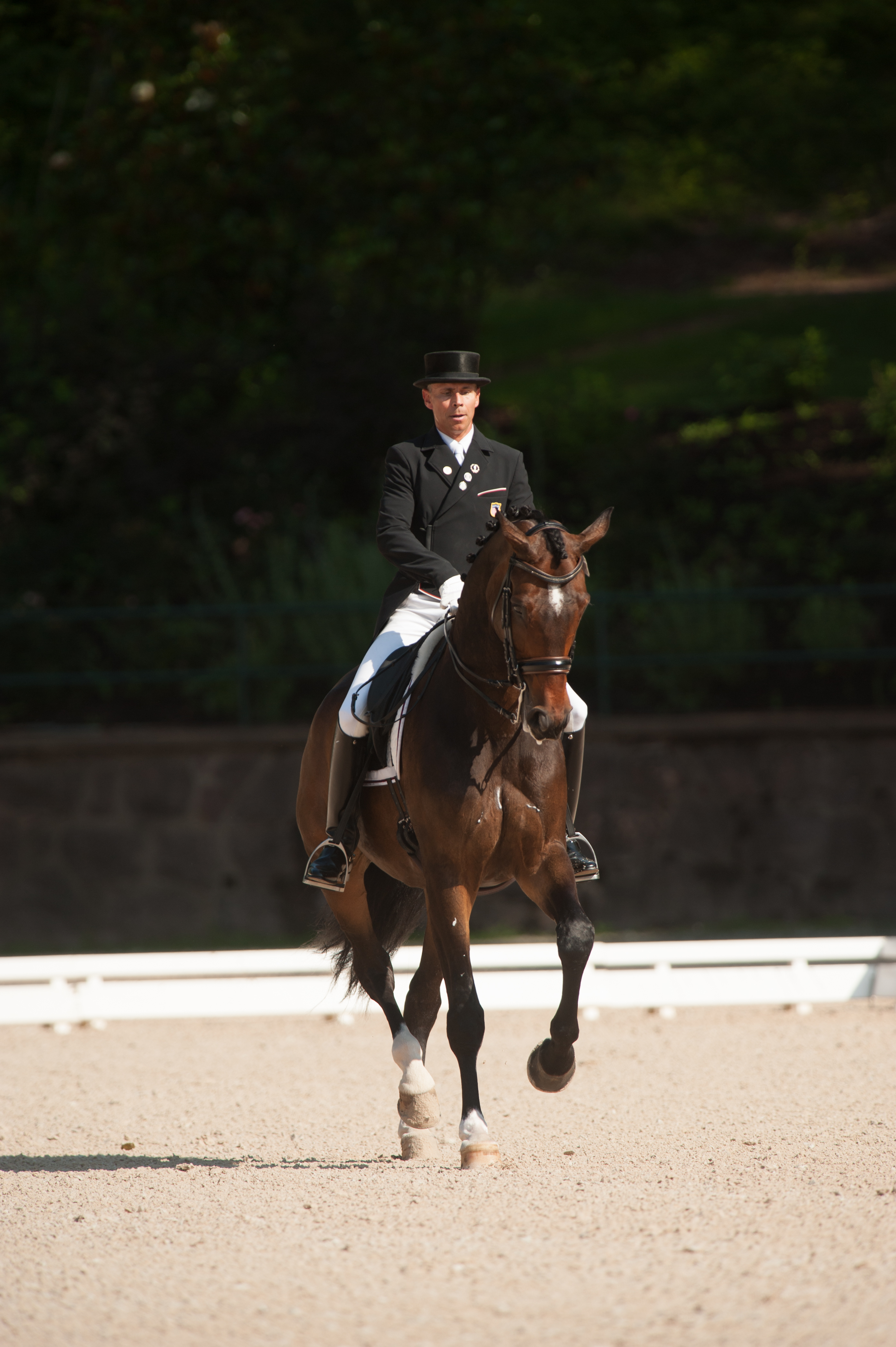
If you think passage is a challenging movement, you’re right. And science just proved it.
On the surface, passage is simply a very slow, very animated trot. Look deeper, though, and a host of biomechanical variables come into play. Identifying those variables was the goal of a recent study led by Hilary Clayton, BVMS, PhD, Dipl. ACVSMR, MRCVS, Mary Anne McPhail Dressage Chair Emerita at Michigan State University and president of Sport Horse Science, LC, and Sarah Jane Hobbs, lead for the research and consultancy in equine surfaces team at the University of Central Lancashire in England.
The passage study was part of a multi-year research project aimed at understanding the mechanics of collection and self-carriage, says Dr. Clayton. It involved the use of a 10-camera motion-analysis system to film three highly trained Lusitano dressage horses performing passage over a set of four force-measurement plates. The plates allowed the researchers to measure the three-dimensional forces of the horses’ footfalls. Body markers helped researchers track each horse’s center of mass and measure balance variables, including pitching moments, limb position relative to the center of mass, trunk posture and the timing of footfalls.
Pitching moments are when the horse’s body rotates around its center of gravity—nose up as the hind limbs swing forward and nose down as the weight shifts onto the forelimbs, explains Dr. Clayton. The researchers found that in passage the horses’ pitching rotation was reduced and they maintained an overall more uphill carriage.
To accomplish this, the horses had to make multiple simultaneous adjustments to their limb positioning and their production of muscle force. Notably, says Dr. Clayton, horses placed their hind hooves a little farther forward under the body and adjusted forces independently in the forelimbs and hind limbs. Researchers also found that while riders tend to associate the hind end with collection, the forelimbs actually played a crucial role in maintaining uphill balance.
“In summary, because the forward velocity of passage is slow, it challenges the horse’s balance,” says Dr. Clayton. “Horses must learn how to adjust the timing of their footfalls, the hoof-placement position and, very importantly, the way that the fore- and hind limbs push against the ground in order to perform a correct passage in good balance. As you can imagine, it’s difficult to teach a horse to do all these things, and some horses never learn the correct technique.”
Spoiler alert: Dr. Clayton notes that yet-unpublished data shows “piaffe is an entirely different beast from passage.” Stay tuned!
This article was originally published in the February 2018 issue of Practical Horseman.










